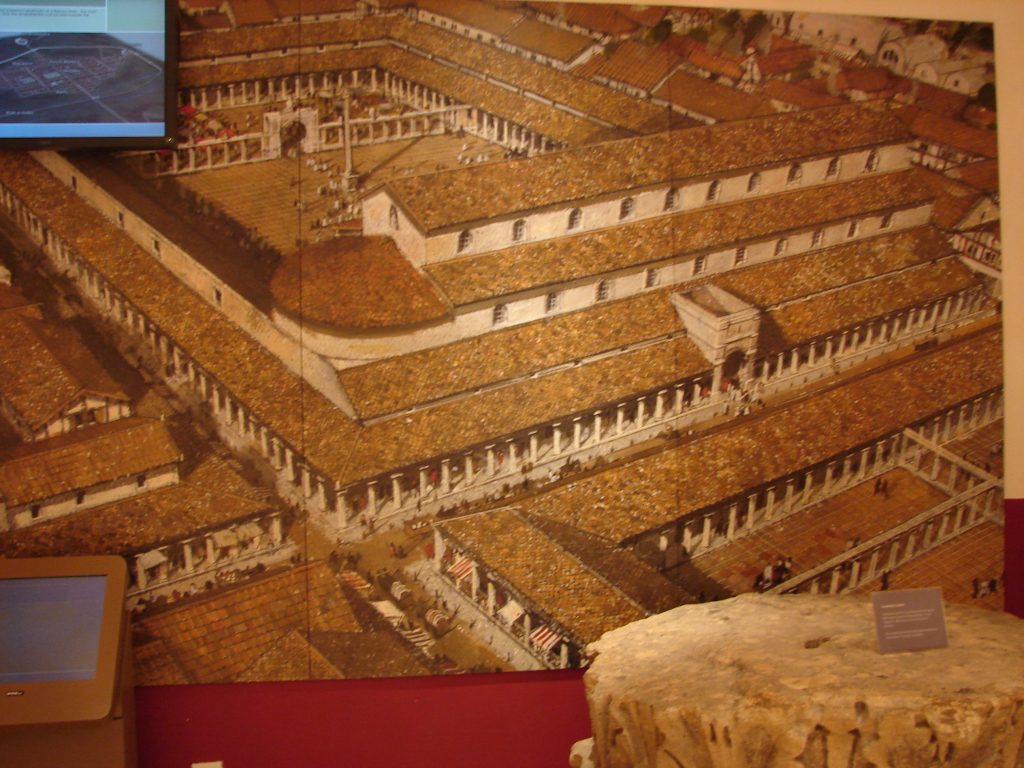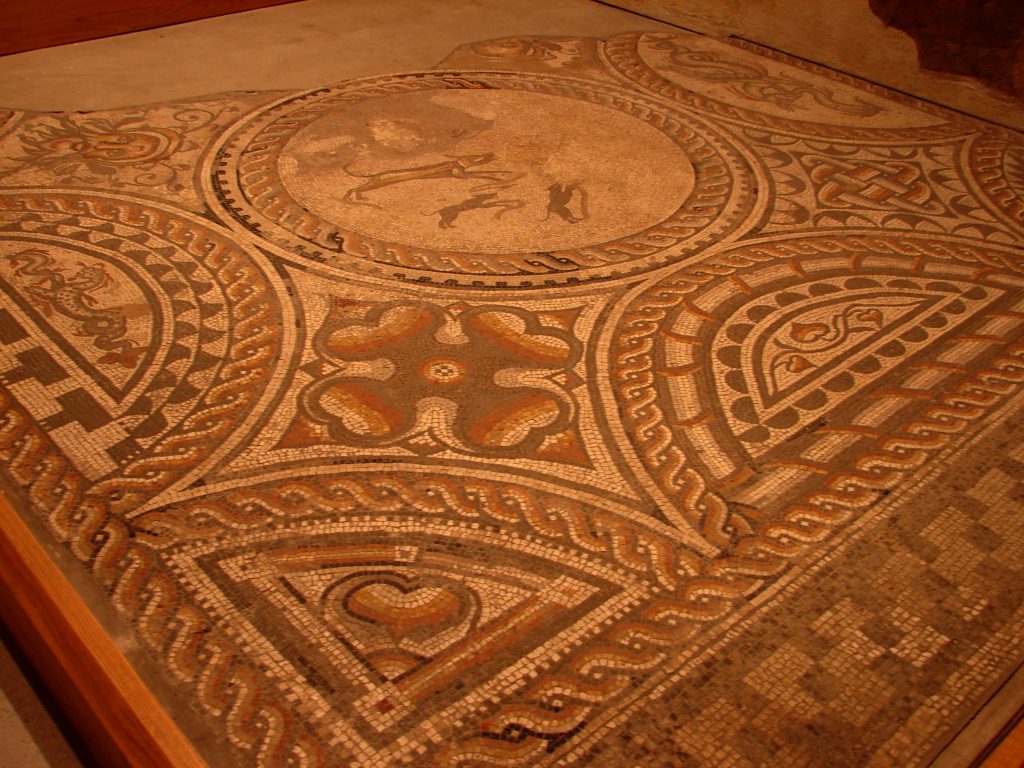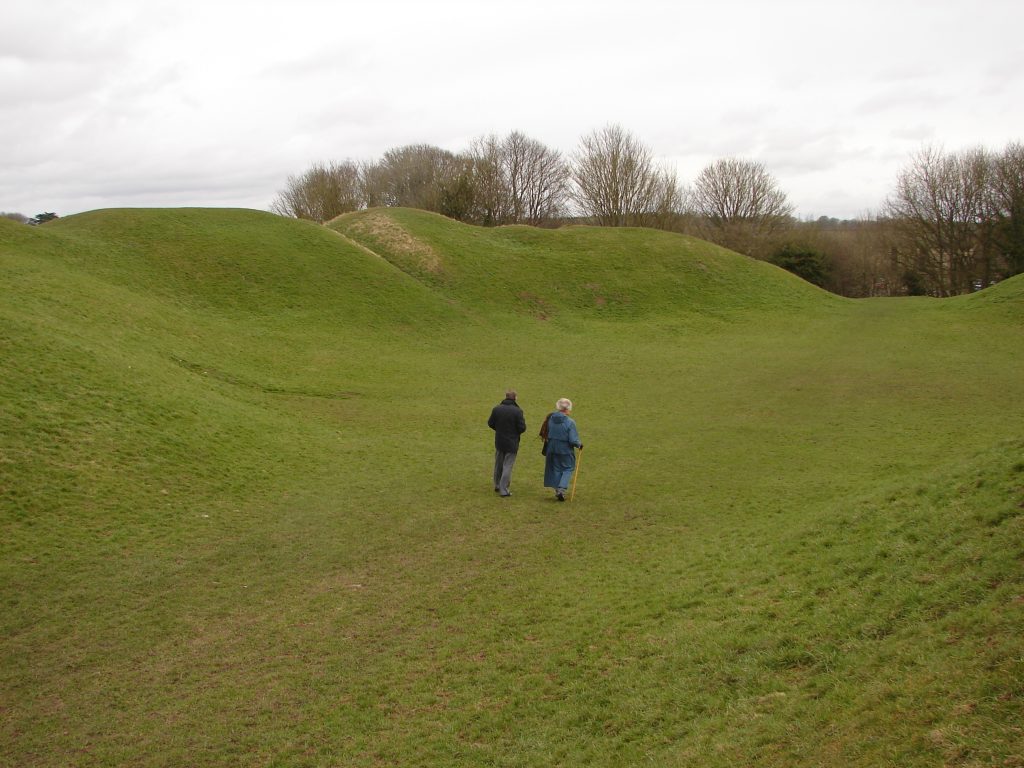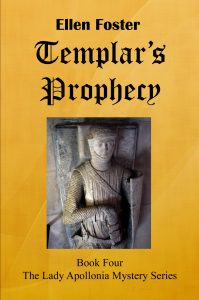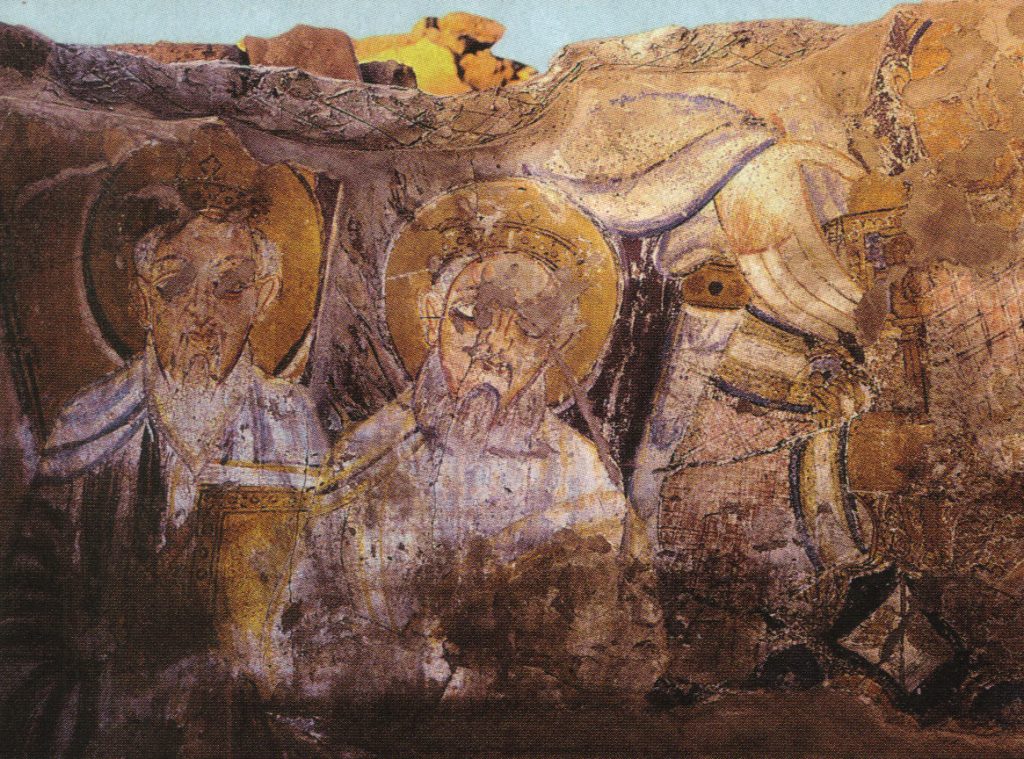Cirencester, the English town in which the fourth novel, Templar’s Prophecy, in the Lady Apollonia West Country Mysteries, is set in AD 1395, has an even more ancient history going back to the Roman occupation of Britain. There was a Roman military presence in Cirencester by the middle of the first century a. d. A stone wall enclosed 200 acres of the Roman town, which by the second century was called Corinium Dobunnorum. The Corinium Museum in Cirencester today takes its name from the Roman designation. Dobunnorum in the title refers to the Celtic tribe which occupied the area.
Corinium was laid out in a typical Roman rectangular street pattern, much of which remains to the present day. The Roman forum and basilica were larger than any other in Britain except in Londinium. A depiction of the forum in the Corinium Museum is shown above.
To this day, Cirencester is the largest town in the Cotswald region of England, but already in Roman times, its location was important in the network of Roman roads which passed through it in various directions. It is on the Fosse Way which the Romans constructed to link Lincolnshire in the north with Devon in the south as well as London in the east with Wales in the west. A sign near the site of the Roman East Gate to Corinium is shown below. It speaks of two of the main Roman roads passing through Corinium. The third was Ermin Street which linked Corinium to Glevum or modern Gloucester.
Corinium has offered archaeologists many Roman treasures even though little of it remains on view above ground in modern Cirencester beyond the footprint of the walls surrounding the Roman town. The Corinium Museum, however, has a rich display of Roman objects including many beautiful mosaic floors such as this one in the photo below.
The site of the Roman amphitheater is just southwest of the Roman walls. It is now covered in grass, but had other types of vegetation in the medieval period. I used this in Templar’s Prophecy as a site where villains in my story could hide. My historian friend Phil Moss from Gloucester is shown walking with me in the middle of the amphitheater site in the image below.
 Roman occupation of Britain ended early in the 5th century, after which the population grew much smaller. However, the Romano-Britons and other Britons that did remain were supplemented in the 5th and later centuries by invading Saxons. These Saxons who were Germanic peoples. rose to prominence in Cirencester as elsewhere in England. One lasting effect of the Saxons in Cirencester was Dyer Street in the northwestern part of the town. Unlike the ancient rectangular street pattern of the Romans, Dyer Street meanders with lovely, gentle curves. A house on Dyer Street which jetties out in its upper stories, shown on the upper left, was my inspiration for the residence of Lady Apollonia’s household in Templar’s Prophecy.
Roman occupation of Britain ended early in the 5th century, after which the population grew much smaller. However, the Romano-Britons and other Britons that did remain were supplemented in the 5th and later centuries by invading Saxons. These Saxons who were Germanic peoples. rose to prominence in Cirencester as elsewhere in England. One lasting effect of the Saxons in Cirencester was Dyer Street in the northwestern part of the town. Unlike the ancient rectangular street pattern of the Romans, Dyer Street meanders with lovely, gentle curves. A house on Dyer Street which jetties out in its upper stories, shown on the upper left, was my inspiration for the residence of Lady Apollonia’s household in Templar’s Prophecy.
In my next post, I will continue to speak of ancient Cirencester.
